Contemporary Classics: 25 Must-See Modern Art Paintings
- 1. Cassius Coolidge, Poker Game (1894)
- 2. Childe Hassam, Rainy Day, Boston (1885)
- 3. Claude Monet, Water Lillies & the Japanese Bridge (1897 - 1899)
- 4. Roy Lichtenstein, The Drowning Girl (1963)
- 5. Mary Cassatt, The Boating Party (1893-1894)
- 6. The Dream by Henry Rousseau
- 7. George Condo, The Cracked Cardinal (2001)
- 8. Wassily Kandinsky, Composition VII (1913)
- 9. Piet Mondrian, Victory Boogie Woogie (1942-1944)
- 10. Edvard Munch, The Scream (1893)
- 11. Paul Cezanne, The Card Players (1895)
- 12. James Ensor, Christ's Entry in Brussels (1889)
- 13. Andy Warhol, 32 Campbell's Soup Cans (1962)
- 14. Willem de Kooning, Woman III (1953)
- 15. Jasper Johns, Flag (1955)
- 16. Paul Gauguin, What Are We? Where Do We Come From? Where Are We Going? (1897)
- 17. Pierre-Auguste Renoir, Luncheon for the Boating Party (1881)
- 18. Salvador Dali, Disintegration of Persistence of Memory (1954)
- 19. Frida Kahlo, The Love Embrace of Universe (1949)
- 20. Edouard Manet, Luncheon on the Grass (1863)
- 21. Jackson Pollock, Full Fathom Five (1947)
- 22. Henri Matisse, Joy of Life (1905)
- 23. Picasso, Guernica (1937)
- 24. Vincent Van Gogh, The Starry Night (1889)
- 25. Marcel Duchamp, Nude Descending a Staircase No.2 (1912)
- Conclusion
Modern painting dates back to the nineteenth century. With the invention of photography and cameras and the ability to take real-life photos, a lot of people may think that painting is an outdated form of art. The ease and simplicity of photography made painting less important.
Artists began to alter their art as a result. Paintings became personal, minimalistic, abstract, and more expressive. In a way, art became what the artist wanted it to be.
Art had to be an expression of the artist to compete with photography. Many works of art outperform photography. Here are the top 25 must-see modern art paintings for you to enjoy.
1. Cassius Coolidge, Poker Game (1894)
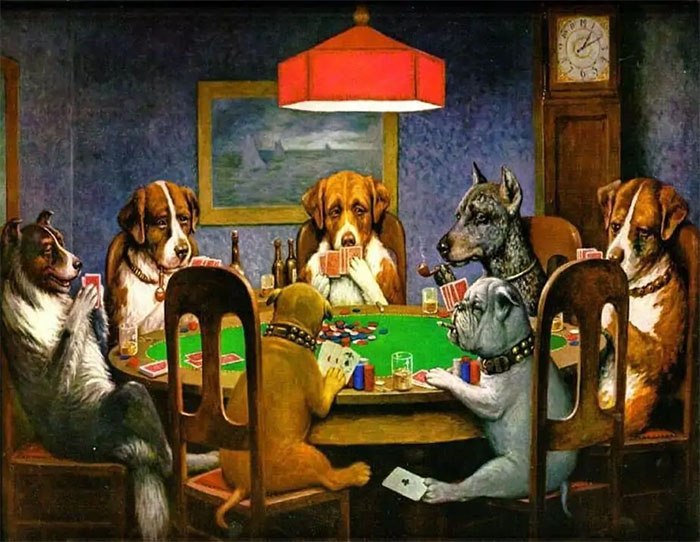
Coolidge was raised in New York by abolitionist Quakers. Coolidge had no interest in farming, so he left it. He began making his mark, painting signs, illustrating books, and creating cartoons.
He was well-educated and created several comic portraits while working. Poker Game was part of his series of comic foregrounds, which are life-sized paintings that depict dogs performing activities humans would do.
The artist who created the anthropomorphic animals motif is credited for the painting, which sold in 2015 for $658,000.
2. Childe Hassam, Rainy Day, Boston (1885)
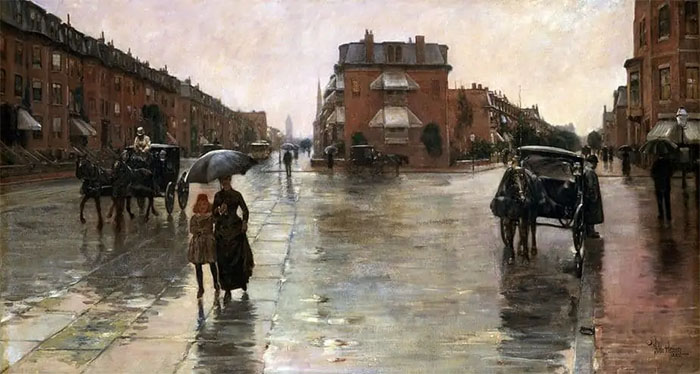
Childe Hassam, an American impressionist artist, produced more than 3000 works of art during his career. He specialized in urban landscapes, ocean scenes, and, later on, outdoor nudity.
Rainy Day, Boston is a unique painting that shows Hassam's passion for painting urban areas using oil on canvas instead of watercolors. This was more profitable. In the early 20th century, the artist's works sold for about $6000 per piece. However, by the 1920s and 30s, Realism, Cubism, and Surrealism were more popular.
Impressionist art made a huge comeback after the artist's death in 1935.
3. Claude Monet, Water Lillies & the Japanese Bridge (1897 - 1899)
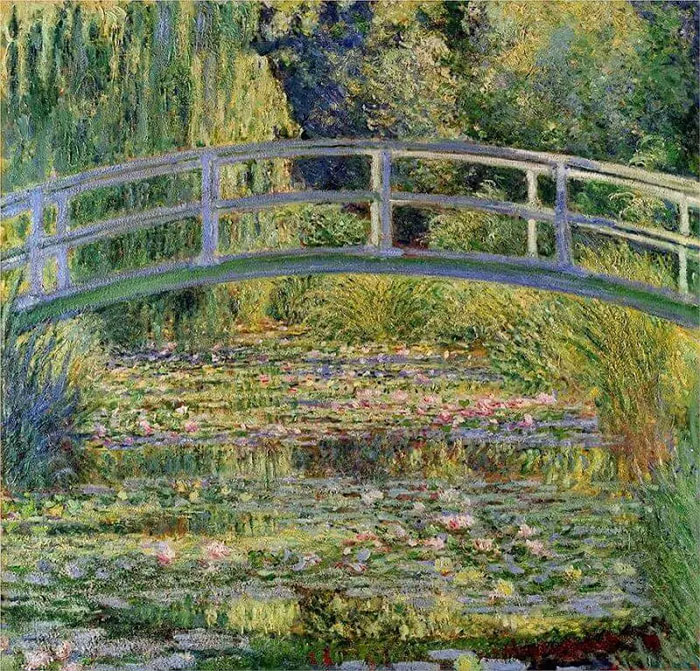
Claude Monet was one of the French Impressionism founders and among the first outdoor landscape painters. This method allows the artist to use aspects like sunlight to capture outdoor objects as they appear in nature instead of a studio impression.
Water Lillies with the Japanese Bridge is one of Monet’s most beautiful works. It was painted in the garden and pond near his French home. The artist also painted buildings, landmarks, and ocean views in the Mediterranean.
4. Roy Lichtenstein, The Drowning Girl (1963)

Once dubbed the worst American artist by critics, Roy Lichtenstein produced works in the Andy Warhol style. In the 1960s, he started exhibiting his artworks at a New York City gallery.
His work appeared straight out of comics, using style choices like Ben-Day dots and thought bubbles depicting people's thinking. He also included narratives and speeches. His works were quickly sold, but critics who called him America's worst artist said they found his work uninteresting, unoriginal, and rude.
The Drowning Girl is Lichenstein's best-known artwork because of how he captures melodrama.
5. Mary Cassatt, The Boating Party (1893-1894)
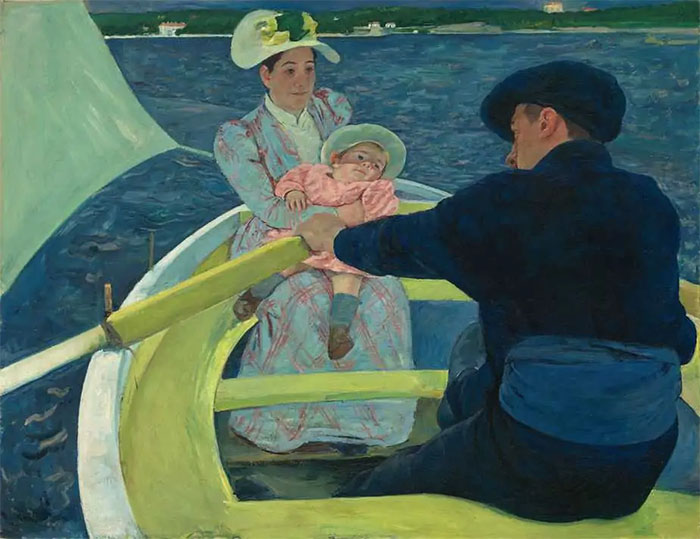
Mary Cassatt is an American who produced The Boating Party. Cassatt studied art and painting as a teenager during the middle of the 1800s.
The artist, who moved to Paris in 1866, began visiting the Louvre while studying, where she and her friends would copy the paintings they saw for small amounts.
The Boating Party was Cassatt's first painting after she had achieved some artistic success. It has been described as her most ambitious work. Cassatt's work had been rejected in previous exhibitions because of its gender.
6. The Dream by Henry Rousseau
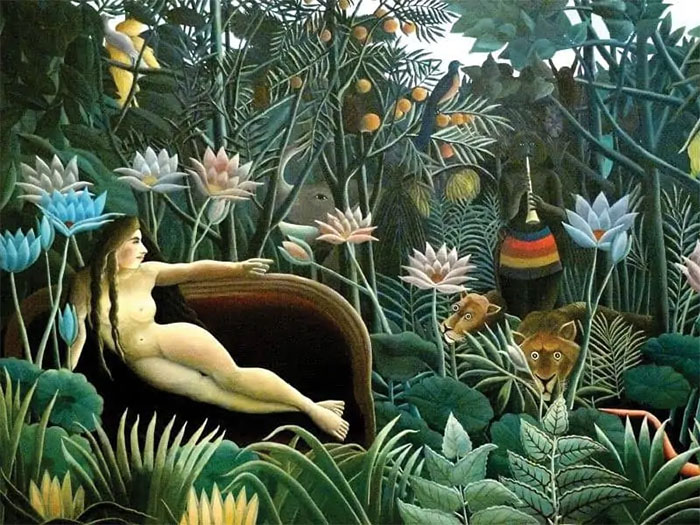
Henry Rousseau, a French postimpressionist and self-taught painter, was ridiculed by critics for his childish works. Later in his career, the artist began to paint many jungle scenes.
The Dream was Rousseau’s last work completed before his death. It is a painting that includes a nude woman reclining on a chair, pointing at a figure in black playing the flute. Many artists have gravitated towards this theme.
7. George Condo, The Cracked Cardinal (2001)
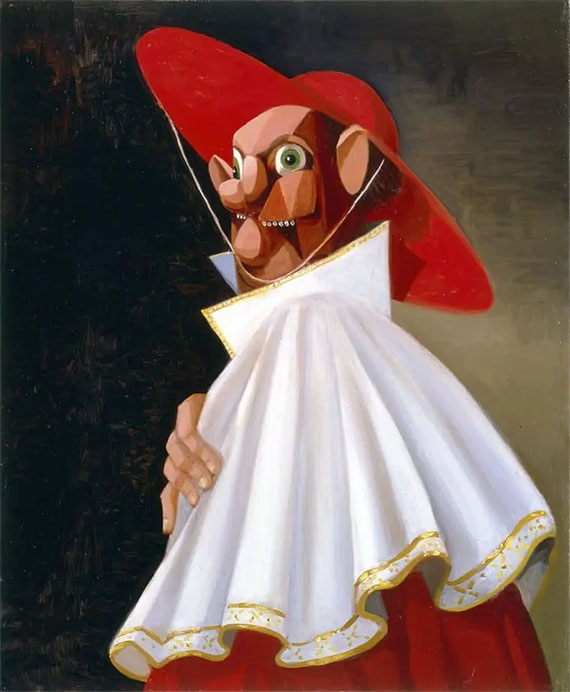
George Condo, a contemporary artist who lives and works in New York City, is one of the most popular modern artists today. Artificial Realism is the name of his art, a mix of old and modern pop art styles.
He exhibited his works in the times of the American Painting Revival in the 1980s. Some also say he has worked at Andy Warhol's Factory. The Cracked Cardinal, produced in 2001, is a mix of pop art and humor with grotesque characters.
The artist, who named this painting and others in the Psychological Cubism style, has cemented his place as one of America's most influential and popular artists.
8. Wassily Kandinsky, Composition VII (1913)
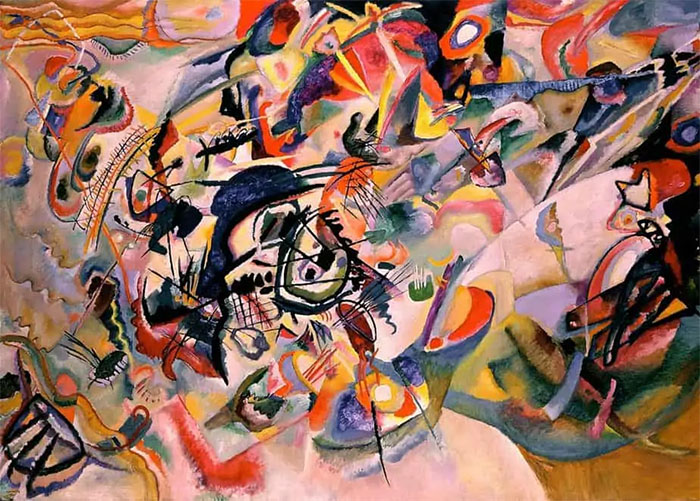
Wassily Kandinsky has been credited as the father of abstract painting. His Composition series is one of his best examples. According to Kandinsky, Composition VII was his most complex work.
This piece includes spirituality, resurrection, examples of the Christian apocalypse, and the four horses of the apocalypse as described in the Bible book of Revelation. In 1933, when Kandinsky was teaching and working in Germany, Nazis closed his school and destroyed three of his early works.
9. Piet Mondrian, Victory Boogie Woogie (1942-1944)
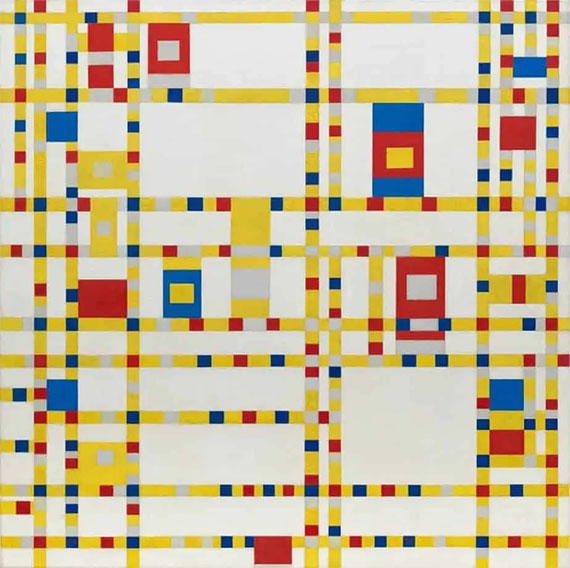
Piet Mondrian is a Dutch painter who started creating art in the 1890s. Mondrian mainly created post-Impressionism art and Cubism. Many of his early paintings were pleasing to the eyes.
Around 1913, the artist began to paint in a different style, called "The Style". This movement encompasses his theories about art, primary colors, and shapes.
Victory Boogie Woogie is an important change in the artist's previous work. It is more lively and optimistic.
10. Edvard Munch, The Scream (1893)

Edvard Munch was an artist who suffered from severe mental illness. He also had many psychological issues. Edvard Munch was born in Norway and created one of modern art's most famous and impressive paintings.
According to the artist, The Scream is a deep red sunset he perceived as nature screaming. The artwork, however, portrays the anxiety that many people feel.
His works are considered the standard for German Expressionism. The artist has tried to show his mental problems throughout his career, including suicidal ideas, pessimism, and alcoholism.
11. Paul Cezanne, The Card Players (1895)
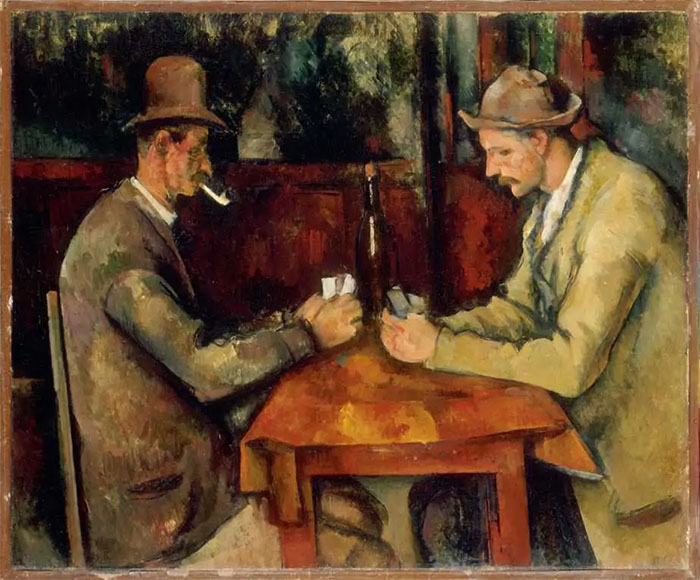
Many consider Paul Cezanne to be a postimpressionist painter. His works are often compared with the Impressionism movements of the 19th and 20th centuries, such as Cubism. Some art enthusiasts of the 20th century, like Picasso and Matisse, agreed that Paul Cezanne is the father of their various art styles.
The Card Players produced in the final years of the artist's life. He had both physical and mental problems.
In 2011, one of the paintings was sold for over $250 million to the Qatar Royal Family, the highest price ever paid for a painting.
12. James Ensor, Christ's Entry in Brussels (1889)
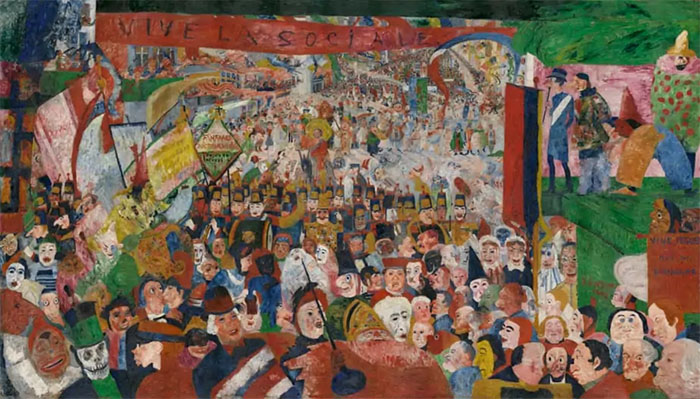
James Ensor, a Belgian painter, is a surrealist and expressionism artist. He belongs to a group known as Les XX. This group includes artists, designers, and sculptors from Belgium who hold an annual art exhibition.
Les XX rejected the Christ’s Entry into Brussels as a part of the exhibition.
This scandalous piece shows Jesus Christ riding a donkey through a crowd of people wearing masks, with many historical figures also in the crowd. The work was first shown to the public in 1929.
13. Andy Warhol, 32 Campbell's Soup Cans (1962)

Andy Warhol is best known for his contribution to Pop Art. He painted 32 Campbell’s Soup Cans and a wide range of everyday household items. This is a collection of 32 canvases that use polymer paint.
It was shown in Los Angeles in the first gallery of Pop Art on the West Coast of America. Many of his contemporaries were against the commercial aspect of his artwork, and many used Abstract Impressionism to create their works.
His works were still very popular, and he became the most famous Pop Art Artist. Warhol died in 1987 after complications from gallbladder surgery.
14. Willem de Kooning, Woman III (1953)
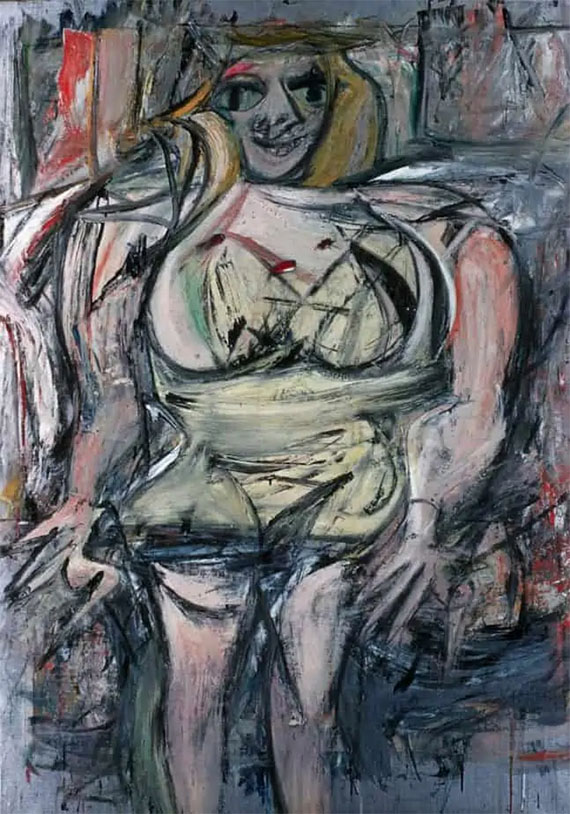
Willem de Kooning, a Dutch painter, was born in The Netherlands. He moved to America in the 1920s. In 1928, Willem de Kooning began his career as an artist, doing figure paintings. By the 1940s, however, he was focusing on Abstraction.
After World War II, de Kooning and some other artists founded the New York School of Abstract Expressionism. Woman 3 is the best of his series of paintings featuring women, which he began in the 1950s.
This painting sold for $137.5 Million. It was one of the 5 most expensive paintings sold in that period.
15. Jasper Johns, Flag (1955)
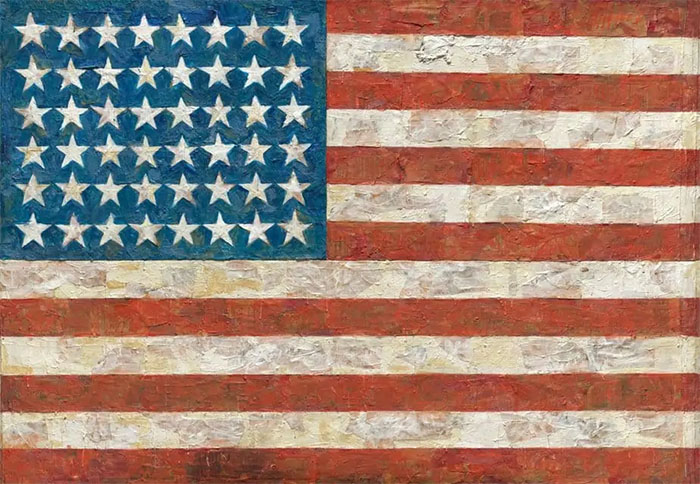
Jasper Johns was in the United States Military, and it is here that he began to dream about the American Flag. After his military service, Johns sought to become a part of the art world. Johns decided to produce artwork on the American Flag.
Flaga painting was created by the artist using oil paint, collage, and canvas. It was then mounted onto a fabric backing and plywood.
Despite the inconsistent nature of his work (such as the newspaper print showing through on the stripes and the fact that the states were different), it was popular and sold for 36 million dollars in 2014.
16. Paul Gauguin, What Are We? Where Do We Come From? Where Are We Going? (1897)
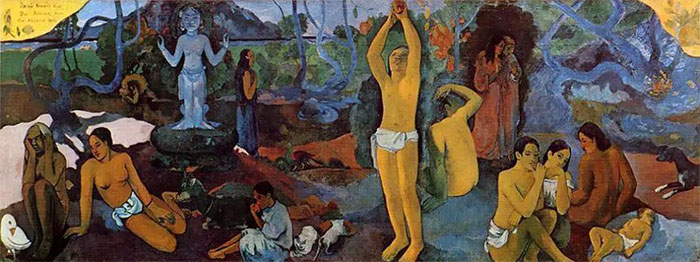
The French economy collapsed in 1882. Paul Gaugin was not the only businessman who found it difficult. The artist's art was primarily post-impressionist, but he also explored other art styles, such as Synthetism or Symbolism.
In the 1890s, the artist painted many portraits of the Polynesian population in Tahiti and the Marquesas Islands. They were the artist's final pieces.
After completing his last project, he tried suicide but failed and died in 1903.
17. Pierre-Auguste Renoir, Luncheon for the Boating Party (1881)

Renoir had a penchant for illustrating captivating women and scenic landscapes. His creations are frequently hailed as among the Impressionist movement's finest. Other artists' masterpieces motivated Renoir to showcase his art at the inaugural Impressionist exhibit in Paris.
The artwork, Gathering by the River, splendidly captures the essence of late 19th-century French life. It portrays his soon-to-be spouse and several close acquaintances interacting with a canine.
Despite battling severe arthritis and joint fusion, the artist continued his craft for many subsequent years.
18. Salvador Dali, Disintegration of Persistence of Memory (1954)

Dali once remarked, "I don't conform." This statement aptly encapsulates the unique and often outlandish nature of this artist, known for his eccentricities and self-absorption.
Certain masterpieces are so awe-inspiring that it's hard to fathom they're a mere mortal's work.
In Fragmentation of Time's Resilience, Dali reimagined his earlier piece, Resilience of Time, crafted over two decades prior.
19. Frida Kahlo, The Love Embrace of Universe (1949)
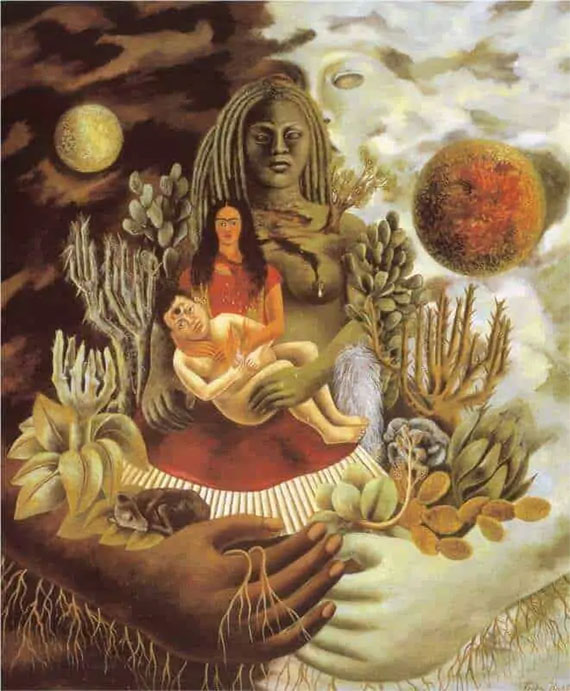
Frida Kahlo suffered from severe health problems. She had been in a serious car accident and had polio. The Mexican Surrealist's career was lengthy, and she produced many impressive pieces, often combining realism with fantastical elements without any basis.
Many social movements noticed Kahlo's work and legacy during the 1970s. She became one of the best-known artists of the 20th century.
The Love Embrace of Universe depicts Kahlo, her husband, and their country, Mexico, embraced by the Earth and then by the Universe.
20. Edouard Manet, Luncheon on the Grass (1863)
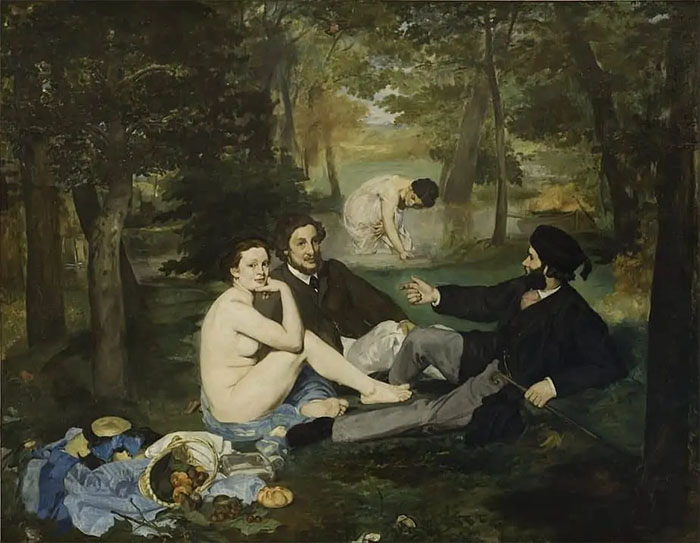
Edouard Manet started his career as an artist at the Louvre. He would copy the works of old artists to improve his craft. His paintings and works are significant and represent the beginnings of modern art styles. They also serve as a link between the Impressionist and Realism movements.
Luncheon on the Grass depicts a verdant setting with two men in full attire and an unclothed woman with her garments strewn nearby.
Initially, this piece faced rejection at the Paris Salon showcase.
21. Jackson Pollock, Full Fathom Five (1947)

Jackson Pollock, a prominent figure in Abstract Expressionism, is celebrated for his dynamic artworks. He employed a method where paint is splashed, poured, or drizzled onto a canvas.
His struggles with alcohol addiction were no secret, and he sought solace in art. However, his efforts were in vain. He tragically died in 1956 as a result of a vehicular mishap. It happened under the influence of alcohol. Long after he died, people bought his paintings for millions. That’s how tricky the fame can be.
22. Henri Matisse, Joy of Life (1905)
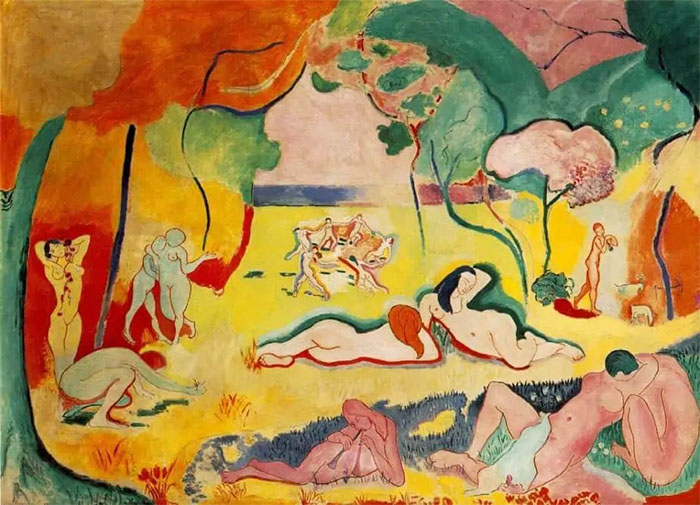
Henri Matisse is a pivotal artist of the 20th century. His contributions significantly influenced the art world.
Matisse's artistic flair is evident in his vibrant color choices. A distinctive aspect of his style is its close association with the Fauvist wave, a direction he embraced during that era.
Joy of Life was criticized heavily. It received mixed reviews. Not all appreciated or comprehended his technique. Some viewed his method as lacking in precision.
23. Picasso, Guernica (1937)

Pablo Picasso, alongside Henri Matisse, played a crucial role in defining the artistry of the early 20th century. Picasso's creations predominantly reflect Cubist and Surrealist styles. Some reckon that he crafted over 50,000 pieces, spanning paintings, sculptures, and pottery.
His most renowned piece, Town's Lament, is an artistic commentary on the bombings of the city by German and Italian air forces during the Spanish conflict.
During the Second World War, while in Paris, he was often inspected by the German secret police.
24. Vincent Van Gogh, The Starry Night (1889)
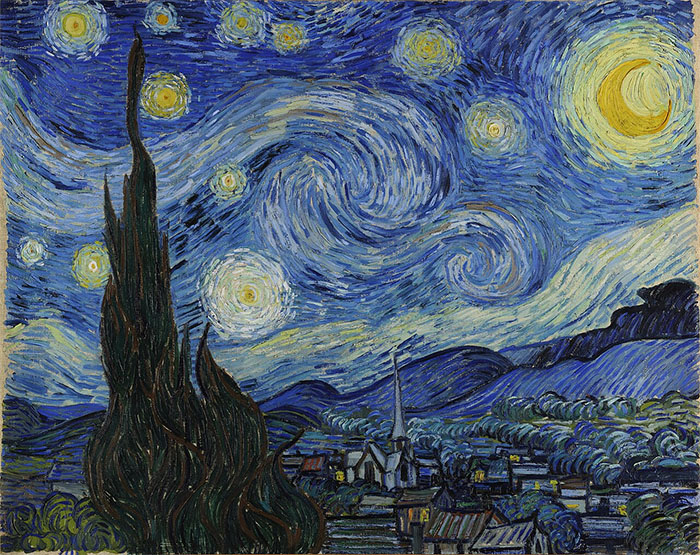
Vincent van Gogh was an artist with a mental illness his entire life. He died at a young age, 37. His legacy is still felt today. The Dutch post-impressionist produced 2100 works of art despite his premature death.
He suffered from psychosis, depression, and delusions. Two days after he shot himself in the chest, he died.
Starry Night is a masterpiece, and the use of paint swirls is the most stunning part of it. This painting is a classic van Gogh.
25. Marcel Duchamp, Nude Descending a Staircase No.2 (1912)
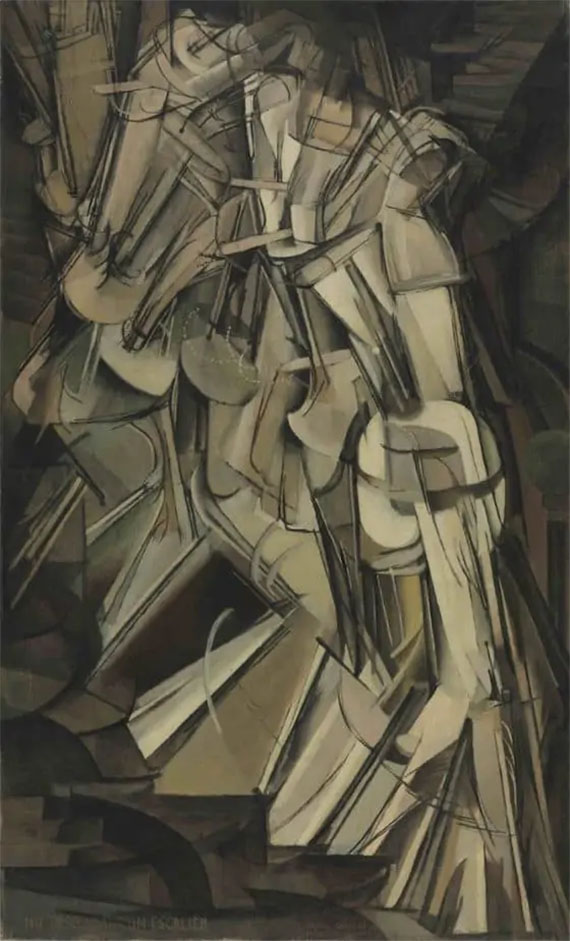
This masterpiece showcases a bare figure navigating downward on steps. The woman that goes downward is totally naked. Duchamp intended to craft pieces that would reshape perceptions and interpretations of art. His artistic style combines features of Cubism and Dada.
The way the motion is depicted in this artwork stands out as one of its intriguing features. Its debut was in Spain, amidst a showcase highlighting Cubism, Fauvism, and Futurism. The piece evoked a lot of debates among many spectators.
This painting remains a great example of contemporary art.
Conclusion
Contemporary art boasts a plethora of captivating pieces stemming from diverse artists and movements. These creators have harmonized their flair with the advent of photography, birthing remarkable masterpieces.
The top 25 contemporary art pieces will be etched in history as the legacy of artists who embraced evolving eras and delivered their finest for our appreciation.
Future artists will similarly need to evolve, aligning with emerging tech and innovations. This might lead them to craft some of the era's standout pieces.
No Comments Yet...